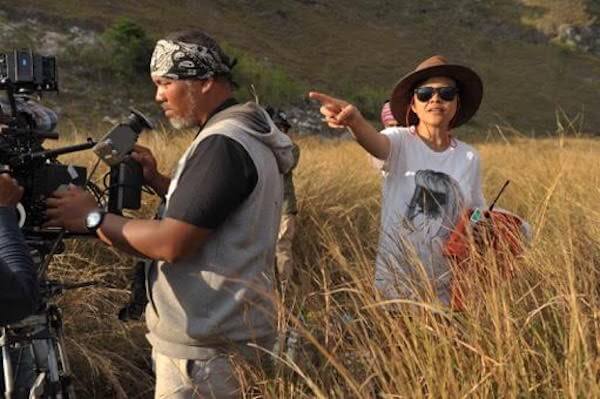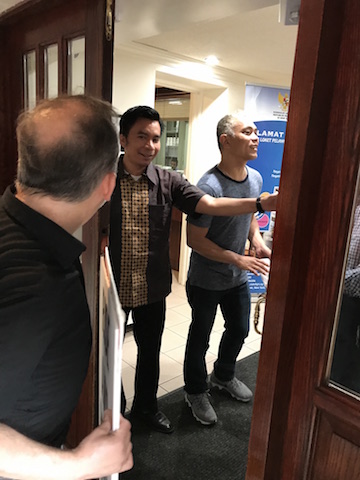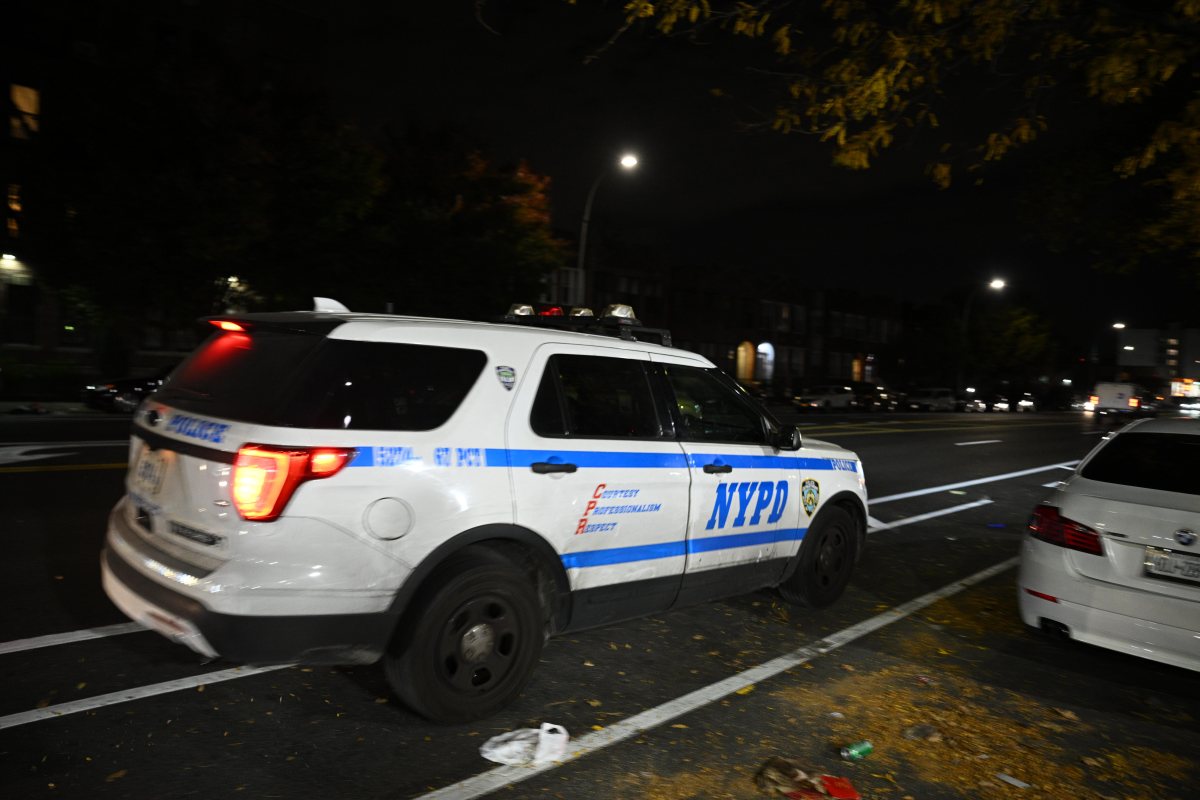Adi watches footage of interviews director Joshua Oppenheimer conducted with perpetrators of the 1965-66 Indonesian genocide. | DRAFTHOUSE FILMS/ PARTICIPANT MEDIA.
BY STEVE ERICKSON | The world of Joshua Oppenheimer’s previous film, “The Act of Killing,” was a moral black hole — and not a safely fictional construct. Oppenheimer invited the murderers of Indonesian “communists” — a blanket term for anyone the government, installed by a 1965 military coup, disliked — to make films dramatizing their experiences, and the results resembled the cinema that Nazis might have made had they won World War II. Resistance was almost entirely absent from “The Act of Killing,” with the exception of one or two stray critical comments from a young TV engineer. Considering that the killers were still in power in Indonesia when the film was made, that’s understandable, but not the full story.
“The Look of Silence,” Oppenheimer’s follow-up, traces the efforts of Adi, an optometrist, to investigate the murder of his older brother. Oppenheimer shows a family of survivors of the 1965 genocide, including a mother and father who have survived to live to be over 100. Adi’s job working with eyes may make a bit too neat of a metaphor — he helps people see, literally and figuratively — but the filmmaker didn’t invent it. Living in his home town, it’s impossible for Adi to avoid the perpetrators of the genocide; they still maintain positions of power and many of them are his clients.
Oppenheimer sets up a video monitor and shows Adi outtakes from “The Act of Killing” in which murderers talk about killing his brother, focusing on Adi’s face. Then as he takes prescriptions for glasses, he discusses the events of the ‘60s with his customers, none of whom seem to care.
Probing Indonesia’s past, “The Look of Silence” offers flip side to “The Act of Killing”
As much as possible, Oppenheimer effaced his presence in “The Act of Killing,” although the films-within-the-film clearly benefited from his expertise. Oppenheimer’s voice is heard on camera far more in “The Look of Silence.” (He’s fluent in Indonesian.) Furthermore, interview subjects refer to him frequently, usually in a way that makes Adi look better, one man remarking that his questions cut much deeper than Oppenheimer’s.
“The Act of Killing” was nominated for an Academy Award, no small feat for a film so intensely disturbing. In general, it was extremely well-received. It did have its critics, though. The loudest was filmmaker Jill Godmilow, who took to indieWIRE to post a list of rules documentarians should follow. Of course, such rules are made to be broken. Others thought the film didn’t place enough blame on the US for its complicity in the Indonesian government’s massacre, though it did suggest that American history, politics, and culture were a terrible influence on the country. Oppenheimer may not directly blame the CIA for what happened to Indonesia, but he hits a deeper taboo by depicting American pop culture as anything but a liberating force. Even a film as conservative as “Argo” acknowledges America’s role in overthrowing a democratically elected government in 1950s Iran.
Oppenheimer has used the platform given to him by the success of his films to talk about Western complicity in Indonesia’s dictatorship,. This subject is less of an issue in “The Look of Silence,” but Oppenheimer seems to respond to his critics by including a 1967 American TV news broadcast cluelessly celebrating the extermination of communists.
“The Look of Silence” shows the power of slurs to dehumanize any group of people, ultimately leading to murder. As used in ‘60s Indonesia, “communism” didn’t mean anything specific, yet Oppenheimer films school kids today being taught that communists went around mutilating people and so had to be eradicated. One of the most frightening aspects of “The Look of Silence” is the attitude from some of his subjects that “communists” deserved to die because they were atheists and adulterers.
“The Look of Silence” isn’t quite as tightly focused as “The Act of Killing”; the scenes of Adi’s family life could stand to be trimmed. It’s easier to watch, although the acts, including the drinking of blood (which supposedly preserved the killers’ sanity) described are actually more brutal than those depicted in “The Act of Killing.” But while extremely disturbing, it’s not the unblinking glimpse into hell that “The Act of Killing” was. (The MPAA agrees and rewarded “The Look of Silence” with a PG-13 rating.)
I’d sound hopelessly corny if I suggested that Adi finds some kind of hope or closure at the end, but “The Look of Silence,” unlike “The Act of Killing,” depicts a world where active resistance is still possible. That makes a huge difference, as does the fact that these films themselves have reached a wide audience in Indonesia and sparked debate there. Hopefully, one day Oppenheimer’s “anonymous” co-director will be able to reveal his or her real name.
THE LOOK OF SILENCE | Directed by Joshua Oppenheimer | Drafthouse Pictures/ Participant Media | In Indonesian and Javanese with English subtitles | Opens Jul. 17 | Landmark Sunshine Cinema, 143 E. Houston St., btwn. First & Second Aves.; landmarktheatres.com







